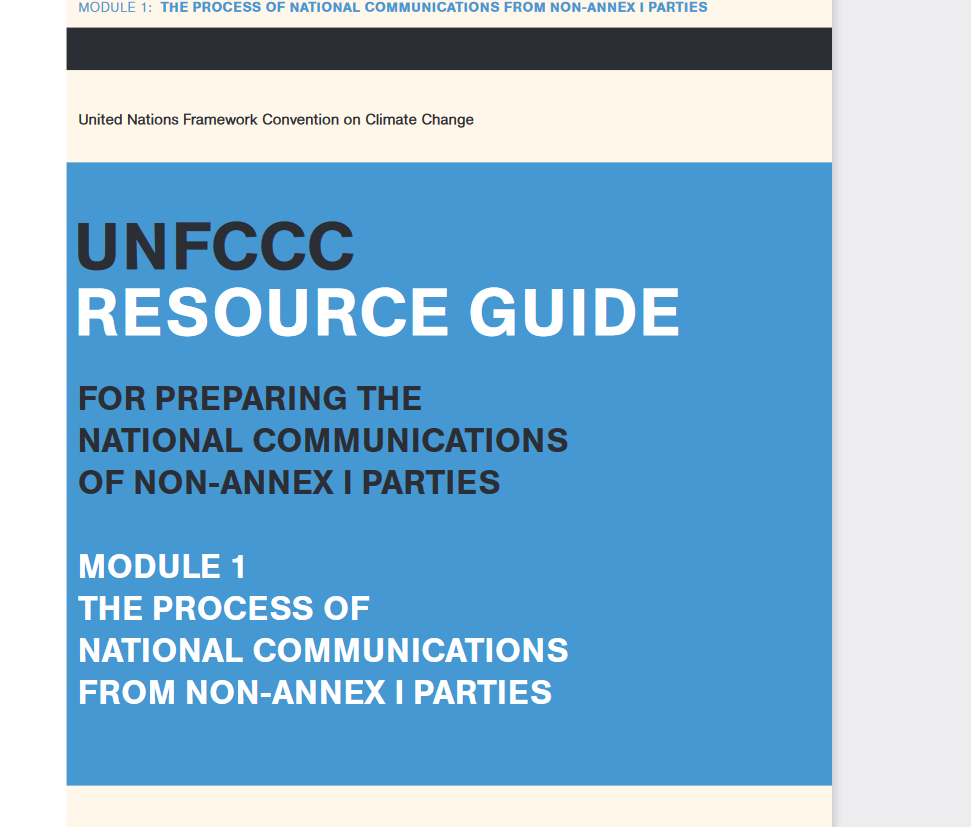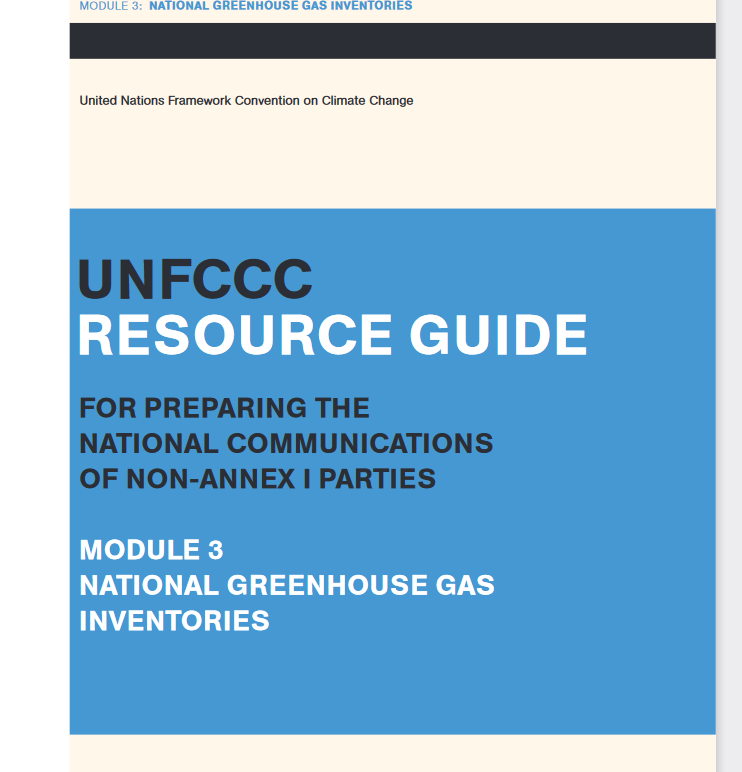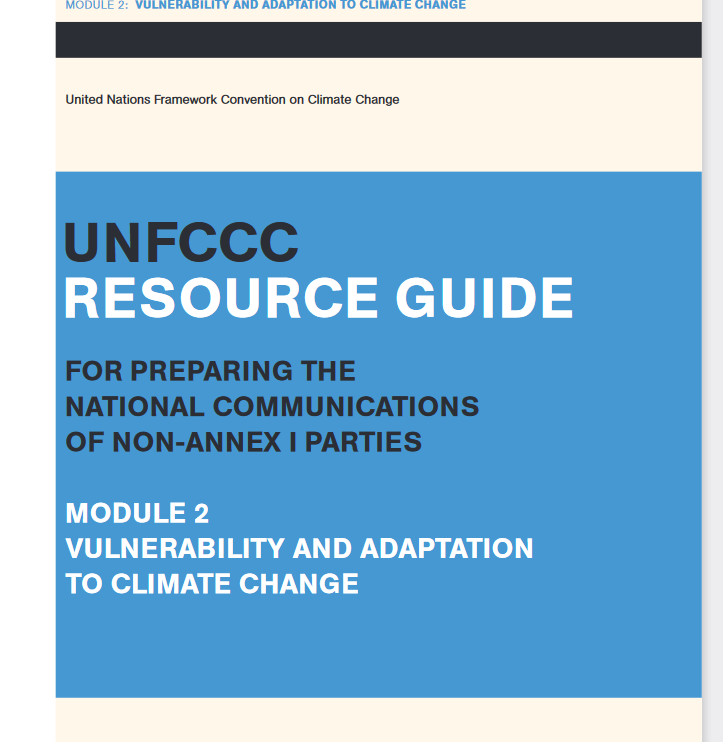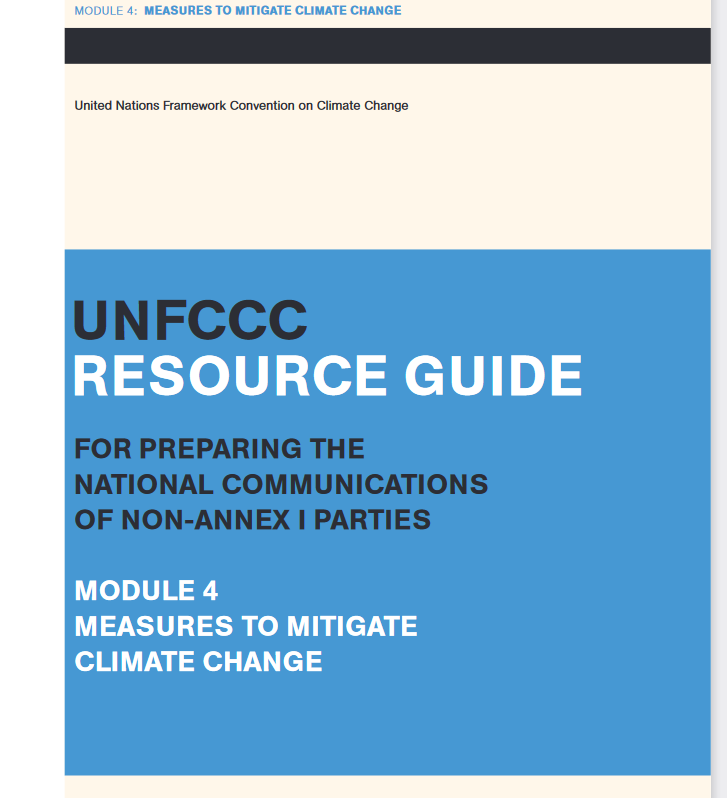1.0 Introduction
I am embarking on a thesis as part fulfilment of an MSc degree in Climate Change, Agriculture and Food Security at the University of Galway in Ireland. See www.nuigalway.ie/ccafs for a brief overview of the course on a topic that is now an everyday debate. I will be researching what, in reality, constitutes ‘institutional arrangements’ for Non-Annex 1 countries in the context of their UNFCCC and Paris Agreement commitments. Countries, as part of their UNFCCC and Paris Agreement reporting requirements, are expected to describe the institutional arrangements they have established, in order to carry out the climate change work they have committed to do, in two key reports that they are expected to submit. These reports are a National Communication report (NC) and a Biennial Update Report (BUR), or a Biennial Report (BR) for Annex 1 countries. In 2024, the BUR and BR will be replaced by a Biennial Transparency Report, (BTR), to capture the Enhanced Transparency Framework (ETF) as set out in the Paris agreement, article 13. I will be sharing blogs on what exactly Non-Annex 1 countries are expected to include in these three reports.
The (UNFCCC-CGE 2020), Handbook recommends that institutional arrangements can be organised around five separate components as : (1) organisational mandates, (2) expertise, (3) data flows, (4) systems & tools, (5) stakeholder engagement, with sub – components listed under each. My thesis will examine what institutional arrangements have been put in place for a selected number of Non-Annex 1 countries, in order to meet their commitments in relation to their NC and BUR.
First, we need to know what countries are expected to include in these two reports. However, countries need to have appropriate institutional arrangements in place to facilitate the preparation and writing of these reports and to do the related work as required. This blog will focus on what the NC report is all about. Other blogs will follow.
2.0 The link between the UNFCCC convention and the NC report
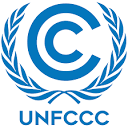
A National Communication Report is linked to the United National Framework Convention for Climate Change (UNFCCC), which was adopted by 197 parties and came into force in 1994.
Parties, i.e. member states, both Annex 1[1] and Non – Annex 1[2] countries, are expected to submit a National Communication report (NC) every four years, in accordance with Article 12, paragraph 1, of the Convention and the guidelines developed and adopted by the Conference of the Parties (COP).
In summary, the NC is a report about communicating to COPs a country’s current status of climate change impact and projected future impacts derived from vulnerability adaptation and mitigation assessments and therefore very technical in nature. The report also includes any research, education, training and public awareness actions conducted. In the case of Annex 1 countries they are expected to add information on financial resources and technology transfers, while Non Annex 1 countries include information on any financial, technical and capacity gaps or constraints experienced. See more details below on what Non- Annex 1 countries are expected to include in their NC report.
Reporting is an essential component of the Convention to enhance transparency, so these reports assist COP to understand how countries are meeting their obligations under the Convention.
Annex 1 countries were expected to have submitted their seventh NC to the United National Framework Convention on Climate Change (UNFCCC) secretariat by 1st January 2018. The eighth national communication (NC8) should be submitted in 2022 no later than 31st December according to decision 6/CP.25. Forty-three of the forty-four countries (except Ukraine), listed as the current Annex 1 countries on the UNFCCC website have all submitted their NC7 reports.
Non-Annex 1 countries are required to submit their first NC within three years of entering the Convention, and every four years thereafter. According to the UNFCCC website, 154 Non- Annex 1 countries have submitted their first NC report (NC1), 145 countries NC2, 93 countries NC3, 18 countries NC4, 2 countries, Uruguay and Mexico, NC5, and one country (Mexico) NC6.
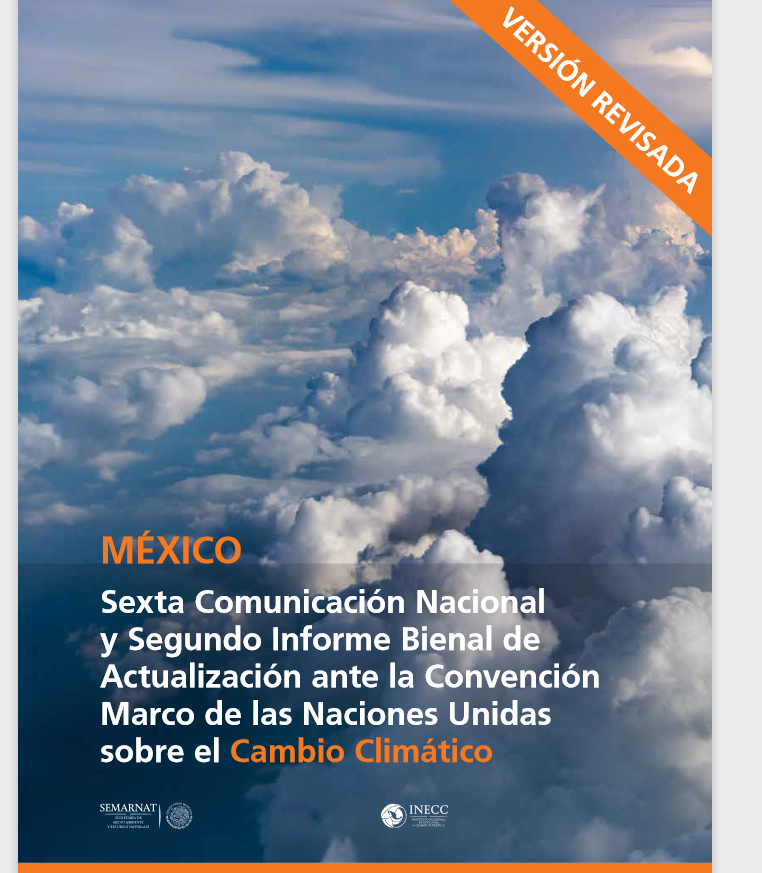
Guidance for Annex 1 countries on what to include in their NCs is defined in Decision 18/CP.8 and in (FCCC/CP/1999/7).
The Guidance for Non- Annex 1 countries is set out in Decision 17/CP.8 adopted at COP 8, in new Delhi, 2002.
3.0 Do Non-Annex 1 countries get support to write their National Communication reports?
There is a Consultative Group of Experts, (CGE) for Non-Annex 1 countries and they have over the years together with the UNFCCC secretariat produced a number of training materials, guidelines, toolkits and templates on how to prepare the different chapters for the NC as well as other reports that Non-Annex 1 countries are to submit.
In addition, Non-Annex 1 countries get financial support to prepare the report. The Global Environment Facility (GEF) provides financial assistance under guidance from the COP. This financing is made available under projects called “enabling activities”, which are implemented through the United Nations Development Programme (UNDP), the United Nations Environment Programme (UNEP) and the World Bank.
The GEF can provide up to US$500,000 to each Non-Annex 1 Party to finance activities related to the preparation of NCs.
4.0 What aspects are Non-Annex 1 countries expected to include in their National Communication reports?
The guidance under Decision 17/CP.8 has seven chapters and each chapter sets out what countries are expected to include in their NC. The seven chapter are as follows: (1) Introduction, (II) National Circumstances, (III) National Greenhouse Gas Inventory, (IV) General description of steps taken or envisaged to implement the convention, (V) Other information considered relevant to the achievement of the objective of the convention, (VI) Constraints and gaps and related financial, technical, and capacity needs and (VII) Submission.
Chapter I: Introduction
The Introduction section has two sub-headings, Objectives and Scope.
The Objectives under the guideline is centred on assisting countries to submit their information in a transparent manner to facilitate the Conference of the Parties, (COP) to assess the implementation of the UNFCCC convention by Parties. The Scope is intended to inform countries of their obligation, under article 12 of the convention, to submit a national inventory of anthropogenic emissions and to remind countries to include the steps they have taken to implement the convention and other information towards the achieving the requirements of the convention.
Chapter II: National circumstances
This chapter sets out what countries can include in order to describe their national and regional development priorities, and their relationship to climate change. Aspects such as geography, climate, the economy and anything that can affect their ability to deal with mitigating and adapting to climate change can be included, as well as other specific needs and concerns with reference to article 4 of the Convention. Countries are encouraged to provide a summary of the information in tabular form.
Non-Annex 1 countries “ may provide a description of institutional arrangements, but relevant to the preparation of their National Communication on a continuous basis”. Establishing sustainable institutional arrangements can be challenging for member states and especially for developing countries who may lack the capacity and finance required to make such institutional arrangements permanent, not just established for the preparation of NCs.
Chapter III: National Green House Gas (GHG) inventory
This chapter has two sub-headings, Methodology and Reporting.
It states that countries shall (‘shall’ means it is mandatory) prepare “in accordance with Article 4 paragraph 1(a) and Article 12 paragraph 1(a) of the convention, a national inventory of anthropogenic emissions by sources and removals by sinks of all greenhouse gases (GHGs) not controlled by the Montreal Protocol, to the extent its capacities permit”. This is a very technical process and requires countries to have specific expertise in order to prepare such national inventories.
The methodology section goes on to describe in detail the need to adhere to the intergovernmental Panel on Climate Change (IPCC) Guidelines for greenhouse gases (GHGs – latest 2019, as revised), for estimating and reporting their national GHG inventories. It outlines the IPCC methods (tiers), but parties are encouraged to use national methodologies where they are more accurate. The IPCC offers default methodologies which include default emission factors. Countries are encouraged to determine their own national emission factors but many Non-Annex 1 countries use default emission factors due to limited data. Countries are encouraged (note, not ‘shall’) to undertake analysis of key sources.
Under the reporting section, Non-Annex 1 parties are encouraged to describe procedures and arrangements undertaken to collect and achieve data for the preparation of the GHG inventories. Non-Annex 1 countries shall provide, on “a gas-by-gas basis, and in units of mass, estimates of anthropogenic emissions of carbon dioxide (CO2),methane (CH4) and nitrous (N2O) by source, and removals by sinks”. Also parties are encouraged, as appropriate, to report information on anthropogenic emissions, by sources of hydrofluorocarbons (HFCs), perfluorocarbons (PFCs) and sulphur hexafluoride (SF6), carbon monoxide (CO), nitrogen oxides (NOx), non-methane volatile organic compounds (NMVOCs) and sulphur oxides (SO8).
All parties have to describe in detail the methodologies used and are expected to use the tables provided by UNFCCC for the purpose of reporting. Countries are also expected to provide information on levels of uncertainty associated with data. Collecting and analysing data is such a significant issue in the preparation of a GHG inventory and in determining the accuracy of results, yet collecting data is one of the biggest challenges facing many Non-Annex 1 countries. UNFCCC has provided over the years extensive guidance on how best to collect and analyse the relevant data, but it still remain a challenge.
Chapter IV: General description of steps taken or envisaged in implementing the convention
This chapter is mainly about providing information on programs being planned and implemented to (1) adapt and (2) mitigate climate change to address Articles 4 and 12 of the Convention. Under the adaptation section, emphasis is placed on countries describing the scope of their vulnerability including the vulnerability assessment they have carried out, describing the methods and scenarios they have used for the assessment. They are expected to describe the vulnerable areas that are most critical, based on this assessment. They are also expected to describe the proposed measures to be taken to address the vulnerabilities.
The Consultative Group of Experts (CGE) for Non-Annex 1 countries has set out, separate to the details in the decision 17CP.8, guidance on how to conduct a vulnerability & adaption assessment, (V&AA).
Similarly, countries are expected to describe the measures they have taken to mitigate against climate change. They are expected to carry out a mitigation assessment, and based on the findings, describe the proposed programs to address the critical issues identified.
CGE/ UNFCCC have also prepared guidelines on how to conduct mitigation assessments. Countries are then expected to describe the process they adopted in their NCs.
Chapter V : Other information considered relevant to the achievement of the objectives of the convention
This chapter asks countries to provide information on activities relating to “the transfer of, and access to, environmentally sound technologies and know how” and any climate change research they may have conducted in relation to adaption and mitigation programs. They are also expected to provide information related to climate change education, training and public awareness and any capacity development activities that are being implemented. They also are expected to share efforts to promote information sharing with other countries and regions and where they have contribution to networks.
Chapter VI: Constraints and gaps and related financial, technical and capacity needs
This chapters sets out what countries are expected to describe in terms of constraints and gaps in relation to financial, technical and capacity needs. Countries are also expected to propose activities to overcome them including stating any perceived constraints in implementation. They are expected to share domestic funds provided for developing the NC as well as any provided by the Global Environmental Facility (GEF), Annex II parties or from Multilateral institutions. They should also state any technical support provided. Countries are expected to set out a list of proposed projects for implementation and their associated costs. They are also expected to describe technology needs and any received, as well as any other relevant information on capacity development.
Chapter : (VII) Submission
This chapter sets out the procedures for submitting the report to the UNFCCC secretariat, following which, the report is uploaded to the official website.
5.0 What happens to the NC Reports?
There are in-depth reviews of the NCs and these are conducted by an international team of experts from Annex 1 and Non-Annex 1 countries, selected from the Roster of Experts.
The NC review typically involves a desk-based study and an in-country visit. The reviews aim to provide a technical assessment of a country’s implementation of its commitments.
6.0 Writing National Communication reports requires high level expertise
There is no doubt that these reports are highly technical in nature and require a high level of relevant technical expertise, extensive data gathering and analysis, and a commitment by a country to engage many non-state stakeholders. In addition, sustainable institutional arrangements are needed in countries to be able to prepare such reports. Establishing such institutions takes many years of dedicated technical and political commitment. Many Non- Annex 1 countries need to be supported to help them meet their commitments, in accordance with Article 12, paragraph 1, of the Convention and in order to facilitate the Conference of the Parties, (COP) in assessing the implementation of the UNFCCC convention by countries worldwide.
7.0 Do you know?

Do you know if your country has submitted their National Communication reports ?
Find out here if you are an Annex 1 country, and here if you are a Non-Annex 1 country.
Do you know that the National Communication reports are so technically complex?
Do you know how to participate in any aspect of the preparation of your country’s NC report?
Notes
[1]The Convention divides countries into three main groups according to differing commitments: Annex 1 Parties include the industrialized countries that were members of the OECD (Organisation for Economic Co-operation and Development) in 1992, plus countries with economies in transition (the EIT Parties), including the Russian Federation, the Baltic States, and several Central and Eastern European States. Annex II Parties consist of the OECD members of Annex I, but not the EIT Parties
[2]Non-Annex 1 Parties are mostly developing countries, 49 of which are classified as least developed countries (LDCs)
Bibliography
https://unfccc.int/non-annex-I-NCs
